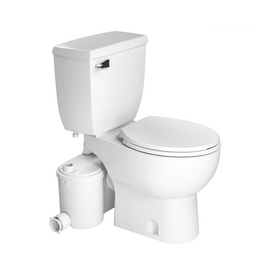
A Guide to Reducing Waste When Decorating for the Holidays
Last Updated: Mar 28, 2025There is something special about driving home from work on a cold, dark December night and seeing house after house lighted by twinkling, colored lights announcing the imminent arrival of one of the most cherished times of the year. When Christmas finally does roll around, the Santa Clause, reindeer, elves, and thousands of other decorations that adorn the inside and outside of our homes add to the holiday spirit as family and friends gather to share and celebrate a time of giving.
What most people do not realize, however, is that holiday decorations represent a significant source of pollution, unnecessary energy use and cause problems to the environment. While we often hear of the waste associated with the increase in consumerism during the Christmas shopping season, the things we use to adorn our homes during this season also contribute to the wastefulness that has come to define this special time of year.
Table of Contents
- Christmas Lights
- The Hidden Cost of Presents under the Tree and Santa Hanging on the Wall
- How to Decorate for an Environmentally Friendly and Non-Toxic Christmas

The Hidden Cost of Presents under the Tree and Santa Hanging on the Wall
Americans produce 25% more trash during the holiday season, amounting to 25 million tons of garbage that ends up in the landfill. This extra trash comes from the 2.65 billion Christmas cards sold every holiday season, the thousands of square kilometers of wrapping paper used to wrap gifts, and the insane amounts of plastic packaging used for the gifts we buy.
The decorations that we use to decorate our home are mostly made from different types of plastics. While these decorations intend to infuse holiday spirit to your family and guests, they also might be adding toxins to your home. The tinsel, wreaths, and other artificial greenery that many people put in their homes during the holiday season might very well contain large amounts of lead, toxic flame-retardants, tin compounds and phthalates, and other hazardous substances.
The Christmas lights we use in our homes, besides wasting energy, might also be leaching lead into our homes. One recent study found that over 50% of all Christmas lights had amounts of lead that were significantly higher than what is permitted in children’s toys.

How to Decorate for an Environmentally Friendly and Non-Toxic Christmas
It would be somewhat “Scroogish” to imply that we should abandon all Christmas decorations. The Holiday season would not be the same without the lights on our homes, the trees in our living rooms, and the wreaths on our doors. Luckily, there are several different environmentally-friendly Christmas decorations options available to us.
Instead of purchasing the regular 40 or 75-watt strand of Christmas lights, several companies offer solar-powered Christmas lights. A small solar panel powers these LED lights, making them an excellent option for outdoor holiday lighting. For indoor lights, opting for LED lights will limit the amount of energy (and money) needed to light your home and tree.
For tabletop decorations, Christmas cards, and wall hangings, instead of heading to Wal-Mart to stock up on wasteful and probably toxic decorative materials, consider making your decorations from recycled materials. From cork wreaths to origami Christmas tree ornaments, there are several different options to make recycled holiday decorations.
Consider heading to a craft fair or Amish farm to purchase your Christmas decorations. Local artisans and farmers often sell Christmas decorations made from locally sourced natural materials. From pinecones to dried orange peels, you can decorate the interior of your home with natural materials sourced from the natural world and crafted by local hands.
Tobias Roberts
Tobias runs an agroecology farm and a natural building collective in the mountains of El Salvador. He specializes in earthen construction methods and uses permaculture design methods to integrate structures into the sustainability of the landscape.











